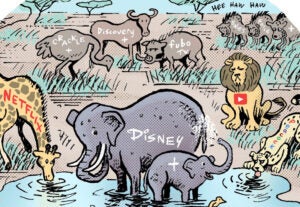 Although the performance-based pay-per-call model is not new, there is renewed interest from publishers due to the ubiquity of mobile and new experimentation in ad formats.
Although the performance-based pay-per-call model is not new, there is renewed interest from publishers due to the ubiquity of mobile and new experimentation in ad formats.
Twitter last week, for instance, revealed plans to serve direct-response marketers through beta tests with brands for click-to-call functionality, as first reported by Digiday. At its most basic, the click-to-call model in direct response entices advertisers (especially those in localized markets) because conversions are generally stronger when a consumer makes a conscious decision to dial in.
“Pay-per-call is kind of back to the future,” said Daryl Colwell, SVP of business development at performance network Matomy Media Group. “It’s a confluence between old media, new media and the advertiser and in a way, it’s this guaranteed, 100% contact rate because it’s a more engaged customer. It’s a lot easier to monetize.”
Matomy ramped up pay-per-call following its acquisition of mobile affiliate network MobAff last summer. Because of the acquisition, MobAff’s mobile publishers, who originally focused on driving app installs or downloads in gaming and utilities, met Matomy’s lead-gen marketer base of 1,500 direct-response advertisers and ad agencies, many of whom were engaged in pay-per-call activities.
Matomy has added between 60 and 100 pay-per-pall clients (depending on the time of month due to vagaries of duration in client campaigns) since Matomy’s acquisition of MobAff.
“If you look at just a year ago where 35-37% of our email traffic was mobile and fast-forward a year and now we’re at 65-75%, for us, it’s taking a step back and saying we’re able to target people right when they’re ready to dial,” said Jeff Fisher, senior mobile strategist for Matomy. “Without disclosing specifics, we’re working with publishers such as CNN all the way to daily deals sites … and looking for ways to create new ad placements that get people to dial in.”
But publishers and advertisers can’t look at pay-per-call in a vacuum, as a majority of people are in close proximity to their mobile devices when using their desktop computers. Smart strategies involve blending pay-per-call ad placements with broader mobile and desktop lead-gen strategies to “let the user interact with the advertiser however they want,” he said.
Matomy’s pay-per-call business could run up against some competition that could very well come from social platforms like Twitter and Facebook, which has been beta testing a click-to-call ad unit, Fisher said.
“They haven’t released it [formally] yet, but it makes sense. Facebook is by far one of the most efficient ways to drive downloads of free apps, but the problem is, advertisers can only afford to pay so much for an app download.”
Fisher added: “The average Facebook CPI is between $2 and $3 … whereas an inbound lead advertiser can pay $30-$40 for an inbound call. If you look at what Facebook is doing, what we’re doing – getting people to dial in with their mobile will really help publishers monetize because it delivers better service to their advertisers.”
A Facebook spokesperson confirmed tests of click-to-call, along with other options. At this point, the unit’s not in general release.













